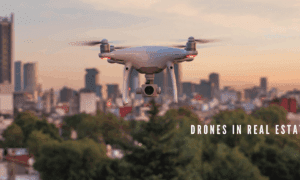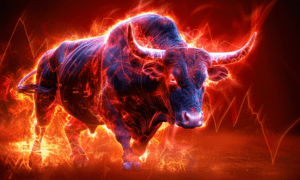In recent years, drones have become more than just a high-tech gadget for aerial photography or military surveillance. They have taken the agricultural and garden management industry by storm, revolutionizing the way tasks are carried out and boosting productivity. With their ability to perform various tasks swiftly and efficiently, drones are changing the game for farmers and gardeners alike.
Benefits of using drones in agriculture and garden management
Drones have numerous benefits when it comes to agriculture and garden management. One of the key advantages is the ability to save time and money. Traditionally, farmers and gardeners would have to manually inspect their crops or gardens, which could be time-consuming and labor-intensive. With drones, these tasks can be automated, allowing farmers and gardeners to focus on more important aspects of their work.
Another benefit is the precision and accuracy that drones offer. Equipped with advanced sensors and cameras, drones provide valuable data and insights that help optimize farming and gardening practices. For example, drones can monitor crops and assess soil health, allowing farmers to spot problem areas, detect diseases, and take timely action. This ultimately improves crop yields and reduces costs.
Furthermore, the use of drones in agriculture and garden management minimizes the need for harmful chemicals. Drones can be used for targeted pesticide spraying, reducing the amount of chemicals used and minimizing the environmental impact. This promotes sustainable farming practices and protects the ecosystem.
Case studies showcasing the success of drone usage in agriculture and garden management
Several case studies have demonstrated the success and effectiveness of using drones in agriculture and garden management. One such example is the use of drones for crop monitoring. By utilizing aerial imagery and sensors, drones can provide real-time data on crop health, growth patterns, and nutrient deficiencies. This allows farmers to make informed decisions regarding irrigation, fertilization, and pest control, resulting in higher crop yields and improved efficiency.
Another case study showcases the use of drones in garden management. Drones equipped with high-resolution cameras can capture detailed images of lawns, plants, and landscapes. This information can be used to analyze plant health, identify diseased or infested areas, and develop targeted treatment plans. Drones can also be used for landscape design, providing 3D models and visualizations that help gardeners plan and execute their projects with precision.
These case studies highlight the tangible benefits that drones bring to the agriculture and garden management industry. They not only enhance productivity and efficiency but also contribute to sustainable and environmentally friendly practices.
Types of drones used in agriculture and garden management
There are several types of drones specifically designed for agriculture and garden management purposes. One common type is the fixed-wing drone. These drones have a wing-like structure and are capable of covering large areas in a short amount of time. Fixed-wing drones are often used for crop monitoring, aerial mapping, and surveying.
Another type is the multi-rotor drone, which is characterized by its multiple rotors. Multi-rotor drones are highly maneuverable and can hover in one place, making them ideal for tasks that require precision and stability. They are commonly used for close-range imaging, pesticide spraying, and garden maintenance.
Hybrid drones are also gaining popularity in the agriculture and garden management industry. These drones combine the advantages of fixed-wing and multi-rotor drones, offering increased flight endurance and versatility. Hybrid drones are often used for large-scale crop monitoring, precision agriculture, and long-distance surveillance.
Drones are revolutionizing sustainable cannabis cultivation, offering economically and environmentally sustainable solutions to enhance the cultivation process. These aerial devices provide a range of applications, including land surveying, precision seed planting, and the targeted application of fertilizers and pest-control products. By utilizing drones, cannabis growers can save money, improve access to crops, and optimize resource utilization while minimizing soil compaction caused by traditional equipment.
The use of drones in cannabis cultivation has advanced significantly, offering benefits such as reduced carbon emissions, improved soil health quantification, and targeted pesticide application. Drones play a crucial role in reducing environmental impact by minimizing diesel and greenhouse-gas emissions while also reducing soil compression. Additionally, electric drones can be used as an alternative to replace traditional fossil-fuel-burning equipment, potentially allowing farmers to receive carbon credits for adjusting their farming practices.
Drones have the capability to apply live biological control agents and beneficial insects directly to crops on a small and precise scale, offering a sustainable pest control method. Furthermore, they provide labor savings, especially during extreme weather conditions, by allowing for efficient pesticide application without the need for manual labor. Drones can operate during off-peak hours, such as at night, to ensure effective pesticide application while avoiding harm to beneficial insects and minimizing environmental impact.
The use of drones in cannabis cultivation offers a cost-efficient alternative to conventional equipment or contracting airplanes or helicopters for crop-dusting. With lower initial investment and operational costs compared to large-scale sprayers, drones provide accessibility to smaller and midsize growers, allowing for a faster return on investment. While drone operation and maintenance require licensing and training, they offer a viable and efficient option for pesticide application and crop management in cannabis cultivation.
For those interested in growing pot, Growers Choice Seeds offers a wide selection of weed seeds with discreet packaging and delivery options in the USA. Their commitment to providing high-quality cannabis seeds aligns with the innovative advancements in cannabis cultivation, including the use of drones for sustainable and efficient crop management. With a focus on customer satisfaction and access to premium genetics, Growers Choice Seeds is a trusted source for obtaining top-notch cannabis seeds for successful cultivation endeavors in the United States. Click here to shop for feminized cannabis seeds.
Drone applications in agriculture – crop monitoring, irrigation management, and pest control
Drones have a wide range of applications in agriculture, revolutionizing various aspects of farming. One of the key applications is crop monitoring. Drones equipped with high-resolution cameras and sensors can capture detailed images of crops, allowing farmers to assess plant health, growth patterns, and stress levels. This information helps farmers identify areas of concern and take proactive measures to ensure optimal crop growth.
Another important application is irrigation management. Drones can provide valuable data on soil moisture levels, allowing farmers to optimize their irrigation practices. By accurately assessing the water needs of crops, farmers can avoid over-irrigation or under-irrigation, resulting in improved water efficiency and reduced water wastage.
Pest control is another area where drones excel. Drones can be equipped with pesticide spraying systems, allowing for targeted and precise application of chemicals. This reduces the amount of pesticides used and minimizes the risk of environmental contamination. Drones can also be used for pest detection, helping farmers identify infested areas and take appropriate action.
Drone applications in garden management – lawn maintenance, plant health monitoring, and landscape design
Drones are not only transforming agriculture but also revolutionizing garden management practices. In terms of lawn maintenance, drones equipped with high-resolution cameras can capture detailed images of lawns, allowing gardeners to analyze grass health, identify areas that require attention, and develop targeted maintenance plans. This ensures that lawns are well-maintained and healthy.
Plant health monitoring is another important application of drones in garden management. Drones can capture aerial images of plants, enabling gardeners to assess their health, detect diseases, and identify nutrient deficiencies. This information helps gardeners take timely action and implement appropriate treatment plans, resulting in healthier plants and improved overall garden aesthetics.
Drones are also used in landscape design. By capturing aerial images and creating 3D models, drones provide gardeners with a visual representation of their design ideas. This allows for better planning and execution of landscape projects, ensuring that the final result meets the desired vision.
Regulations and legal considerations for using drones in agriculture and garden management
As the use of drones in agriculture and garden management continues to increase, it is important to consider the regulations and legal requirements surrounding their usage. Different countries have different regulations regarding drone operations, and it is essential to comply with these regulations to ensure safe and legal use.
In many countries, drone pilots are required to obtain a license or certification before operating a drone for commercial purposes. This often involves passing an exam and demonstrating knowledge of aviation regulations and safety procedures. Additionally, there may be specific restrictions on flight altitudes, flight zones, and the use of certain features, such as autonomous flight modes.
It is also important to consider privacy concerns when using drones in agriculture and garden management. Drones equipped with cameras can capture images and videos, raising potential privacy issues. It is crucial to respect the privacy of individuals and comply with applicable laws and regulations governing data protection.
Training and certification for drone pilots in agriculture and garden management
To ensure safe and efficient drone operations in agriculture and garden management, proper training and certification for drone pilots are essential. Training programs are available that provide comprehensive guidance on drone flight operations, safety procedures, regulations, and data management.
These training programs cover both theoretical knowledge and practical skills necessary for operating drones in an agricultural or garden management setting. They focus on topics such as flight planning, emergency procedures, weather conditions, and understanding airspace regulations.
Certification programs are designed to assess the competency of drone pilots and ensure compliance with aviation regulations. These programs typically involve written exams and flight assessments to evaluate the pilot’s knowledge and skills. Obtaining a certification demonstrates a pilot’s commitment to safety and professionalism in drone operations.
Future trends and advancements in drone technology for agriculture and garden management
The future of drone technology in agriculture and garden management looks promising, with several exciting advancements on the horizon. One area of development is the integration of artificial intelligence (AI) and machine learning algorithms into drone systems. This enables drones to analyze and interpret data in real-time, providing farmers and gardeners with actionable insights and recommendations.
Another trend is the development of more specialized drones for specific agricultural or garden management tasks. For example, there are drones designed specifically for pollination, allowing farmers to augment declining bee populations and improve crop yields. Similarly, there are drones equipped with sensors that can detect specific plant diseases or nutrient deficiencies, enabling targeted treatment and intervention.
Advancements in battery technology are also expected to drive the adoption of drones in agriculture and garden management. Longer flight times and increased payload capacities will allow drones to cover larger areas and carry heavier equipment, expanding their capabilities and applications.
Conclusion
Drones are revolutionizing the agriculture and garden management industry, providing farmers and gardeners with innovative tools to enhance productivity, efficiency, and sustainability. From crop monitoring and irrigation management to pest control and landscape design, drones are transforming various aspects of farming and gardening.
The benefits of using drones in agriculture and garden management are undeniable. They save time and money, improve precision and accuracy, reduce the use of harmful chemicals, and enable coverage of large and inaccessible areas. As the demand for efficient and sustainable farming practices continues to grow, the adoption of drones in agriculture and garden management is set to soar, promising a greener and more productive future for the industry.



































